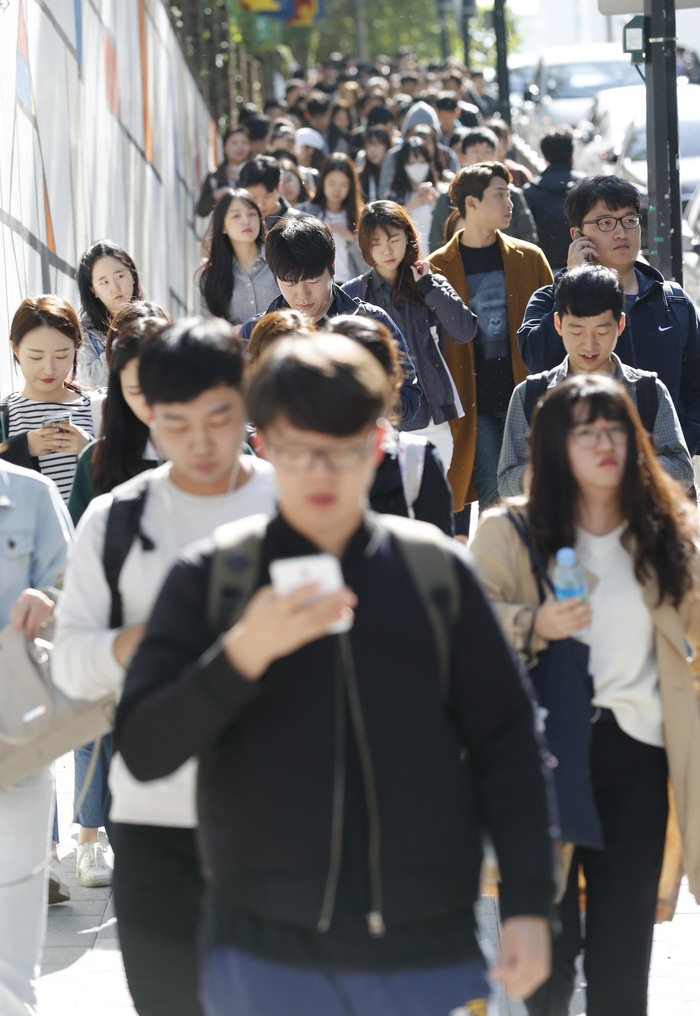 |
|
Job seekers leave from Dankook High School in the Daechi District of Seoul after taking the Global Samsung Aptitude Test (GSAT) for business and marketing candidates in Oct. 2017. (by Park Jong-shik, staff photographer)
|
Spending on private education six times higher among high-asset households
The more assets parents have, the more likely their children are to end up in comfortable jobs where they are paid a lot to do very little, a recent study has found. When parents have more assets, children also tend to start work later, suggesting that they took their time looking for a job. These were the findings of a report titled “Asset Inequality and the Effect of Intergenerational Mobility on the Labor Market” that was released on Mar. 9 by the Korea Labor Institute. Drawing upon data from the 2014 Korea Labor and Income Panel Study, the report analyzed the assets of parents from 647 households and the employment status of their children, between the ages of 26 and 34. The report separated assets into the four categories of none, low, medium and high, corresponding to an average of 10.55 million won (US$9,900), 47.03 million won (US$44,400), 111.54 million won (US$104,800) and 333.21 million won (US$313,300). There was a proportional relationship between parents’ assets and their children’s academic achievements. Spending on private education was 6.1 times higher among high-asset households than no-asset households. As a result, high-asset households had the highest percentage of children with undergraduate degrees or above, at 63%, while no-asset households had the highest percentage of children with high school diplomas or below, at 49.7%. Parents’ assets also had an impact on their children’s performance in the labor market. The children of no-asset households made 2.11 million won (US$1,980) working 50.5 hours a week, while the children of high-asset households made 2.56 million won (US$2,410) working 46 hours a week. The more assets parents have, in other words, the less their children work and the more they make. The percentage of children without a job was 30.4% among no-asset households, 29% among low-asset households, 21.6% among middle-asset households and 27.8% among high-asset households. This shows that the jobless rate decreases as assets increase from no-asset to middle-asset households before spiking among high-asset households. Years on the job decreased as assets rose, with 7.2 years for children from low-asset households, 6.7 for middle-asset households and 6.6 for high-asset households, but children from no-asset households had the fewest years on the job, with 6. “[Children from low-asset households] appear to have trouble getting work and to move around from one bad job to another, while children from high-asset families can afford to take their time in choosing their jobs,” the report concluded in regard to this tendency. “Rather than helping young people who are quick to get jobs, the government should adopt a policy of letting them find the job that is right for them by not rushing the job search. They should be paid an adequate [job-seeking] allowance, and the conditions related to their job-seeking activity should be greatly relaxed or eliminated altogether,” the report advised based on the results of this research. By Park Tae-woo, staff reporter Please direct questions or comments to [english@hani.co.kr]





